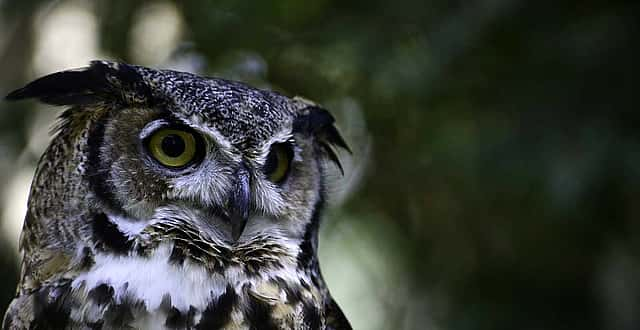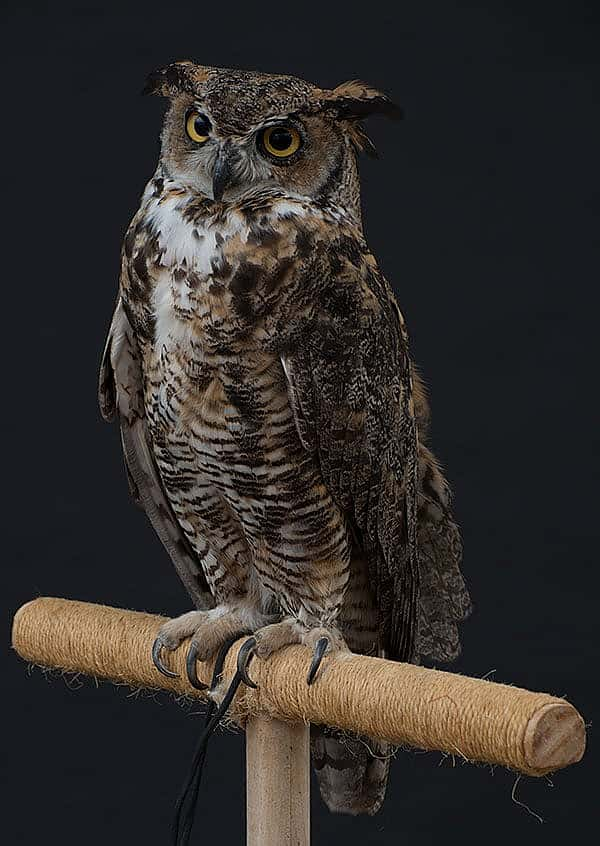
Treasures from Our West: Teasdale the great horned owl
Originally featured in Points West in Winter 2011
Teasdale the great horned owl
One of the exciting—as well as one of the most popular—programs at the Buffalo Bill Center of the West is the Draper Museum Raptor Experience. First envisioned in 1998, when Founding Curator Dr. Charles R. Preston came on board to lead the natural history museum’s design and development, the program finally “took flight” in 2011, thanks to generous support from the William H. Donner Foundation and Donner Canadian Foundation in memory of Robert Donner Jr. and Bobby Donner III.
The program is in the very capable hands of a “master raptor wrangler” and wonderful educator Melissa Hill, the Draper’s Live Raptor Program Manager, and Assistant Manager Brandon Lewis. At the time this Treasure was first featured, we’d constructed a raptor shelter, known as a mews, and acquired six non-releasable birds under the necessary federal and state permits. Now, in November 2022, we have a total of 13 birds.
This is Teasdale, a male great horned owl—one of our living treasures. He, along with his feathered companions of the Raptor Experience, enthralls and helps us educate visitors and area students about raptors and ecological principles in western environments. He hatched in 2010, and was found near Teasdale, Utah, after breaking his right wing. It healed incorrectly, preventing him from having stable flight. Teasdale loves the wintertime, and it’s not uncommon for staff and volunteers to see him sitting in his window with snow blowing over his toes and his feather tufts billowing in the breeze.
The great horned owl is the most widely distributed owl species across North, Central, and parts of South America. They live in swamps, prairies, deserts, cities, and agricultural areas, but are quite fond of forests. Great horned owls eat mostly mammals and birds—especially rabbits, hares, and mice, as well as many other species like voles, moles, shrews, rats, gophers, chipmunks, squirrels, woodchucks, marmots, prairie dogs, bats, skunks, house cats, porcupines, ducks, loons, owls, hawks, crows, ravens, doves, and songbirds. They supplement their diet with reptiles, insects, and invertebrates.
Find out more at our Draper Museum Raptor Experience page and the program’s blog.
Great horned owl Teasdale. Draper Museum Raptor Experience.
Post 043
Written By
Nancy McClure
Nancy now does Grants & Foundations Relations for the Center of the West's Development Department, but was formerly the Content Producer for the Center's Public Relations Department, where her work included writing and updating website content, publicizing events, copy editing, working with images, and producing the e-newsletter Western Wire. Her current job is seeking and applying for funding from government grants and private foundations. In her spare time, Nancy enjoys photography, reading, flower gardening, and playing the flute.

